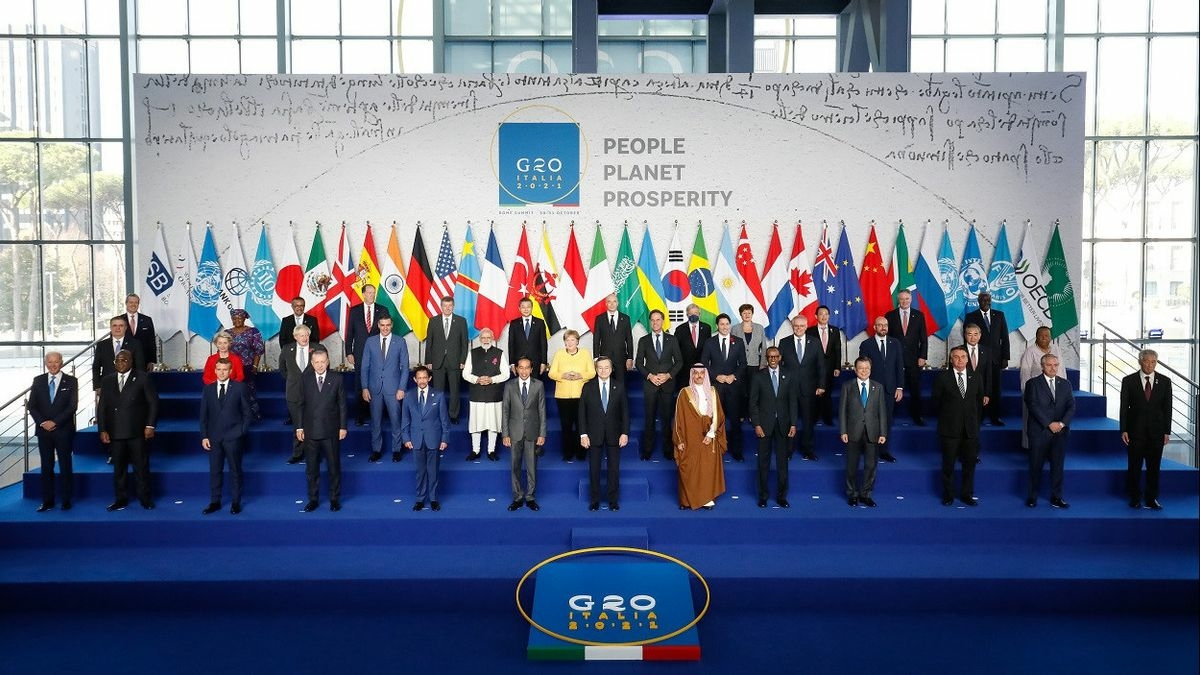SAN DIEGO (CNS) – The United States is behind other major economic powers in terms of credibility regarding climate change, a report by UC San Diego researchers revealed Thursday.
The state of California is at the forefront of these so-called climate change goals, and our energy grid is not responding well. Blackouts have become commonplace, and state officials are asking people not to use their air conditioners, large appliances, or even charge their cars when temperatures soar, which is very common in this state.
Still, the UCSD scientists behind the study believe making stricter climate goals for the country is the right way to go.
UCSD scientists have published the following information about their findings:
The study is the first to provide scientific evidence to assess how effective governments will be in meeting their commitments to the landmark 2015 Paris Agreement to reduce the CO2 emissions that cause climate change.
The research shows that the countries with the boldest promises are also the most likely to achieve their goals. The European Union takes the lead with the strongest commitments, which are also the most credible; However, conclusions suggest that the United States, despite having a less ambitious commitment under Paris, is not expected to meet its promises.
“The promises written in the agreements are legally non-binding, so the success of the agreement centers around trust in the system that when governments make promises, they keep those promises,” said the lead Author of the study David Victor, professor. of Industrial Innovation at UCSD’s School of Global Policy and Strategy and co-director of the Deep Decarbonization Initiative. “Our results show that the framework of the agreement works quite well.
“The Paris Agreement brings countries to make ambitious promises; last year, almost all countries updated these promises and made them even more ambitious,” he said. “What is needed next is better systems to check that countries actually deliver what they promise.”
The study is based on a sample of registrants from the Conference of the Parties – consisting of more than 800 diplomatic and scientific experts who have participated in climate policy debates for decades. This expert group was important to survey, the researchers said, because they are the people “in the room” when key political decisions are made and therefore in a position to evaluate what their countries and other countries are likely to achieve.
These experts were asked to rate member nations – including their own country – to measure pledge ambition, which is how much each country has promised to do to reduce global warming, compared to what they could feasibly do, according to their economic power, to avoid a climate crisis. They were also asked to evaluate the degree to which nations have promises that are credible.
According to the study, a subset of survey responses from eight countries plus the EU were selected to be most relevant to climate mitigation policy. They rate Europe’s goals as the most ambitious and credible. Europe is followed by China, Australia, South Africa and India. The United States and Brazil come last in the credibility category and just ahead of Saudi Arabia in terms of ambition.
In the analysis, experts from North American countries were the most pessimistic about their promises, both in their demand and in the ability to achieve climate goals in the agreement.
“From all the responses, it’s clear that the United States is clearly in trouble — even with the recent Inflation Reduction Act signed into law, which happened after our study ended,” Victor said. “While the legislation is a big step in the right direction, it does not provide the same investment that many other counties have already committed to.
“I think the big questions that our study raises are ‘How does the United States strengthen its credibility?’ and ‘Why is credibility a problem?’
The researchers performed a statistical analysis of the data set and found that nations with more stable governments are more likely to have bold promises that are highly credible.
However, the authors noted that China and other non-democracies are expected to honor their promises not simply because many of them have less ambitious promises, but because they also have administrative and political systems that make it easier to manage complex national To implement policy from above. down.
It is sparsely populated, with just 576 inhabitants, according to the most recent census. Brandi Stewart, the spokeswoman for Death Valley National Park, said the valley is so hot because of the configuration of its lower-than-sea-level basin and the surrounding mountains.
Is California getting colder?
California‘s climate is changing. Southern California has warmed about three degrees (F) over the past century and the entire state is getting warmer. Heat waves are becoming more frequent, the snow melts earlier in the spring – and less rain falls in Southern California.
Why does it get colder in California? The overall temperature goes down partly because of the clouds, which reflect the short-wave solar radiation. Wind also tends to pick up in low pressure regions mainly due to differences in air density. To see also : California first to cover health care for all immigrants. So, basically, now you see how the low pressure has led to colder weather for us in LA!
Whats the coldest it gets in California?
Boca also recorded the lowest temperature ever observed in California, -45°F (National Oceanic and Atmospheric Administration 2009).
Which city in California is the coldest?
Jackson is a California State Park Ranger and his job is to protect a town where no one lives. A ghost town called Bodie State Park. See the article : ‘News out of the United States is horrible’: G-7 ally Biden feels intimidated at reversing US abortion rights. It is one of the best naturally preserved ghost towns in the nation. It is also the coldest place in California.
Is it colder in California?
The hottest month of the year in California is July, with an average high of 86°F and low of 71°F. The cold season lasts 3. This may interest you : The food security crisis could kill more people than Covid has, says the Senegalese minister at the G-20.1 months, from December 3 to March 7, with an average daily high of 52°F. The coldest month of the year in California is January, with an average low of 30°F and high of 44°F.
Is San Diego at risk of flooding?
11,725 properties in San Diego are likely to be affected by flooding in the next 30 years. San Diego is expected to see a 185.7% increase in the number of days above 89ºF over the next 30 years.
Is San Diego at risk for sea level rise? NOAA study shows sea level rise is drastically increasing, affecting San Diego. A new report from the National Oceanic and Atmospheric Administration (NOAA) predicts that sea level rise will increase by up to 12 inches nationally over the next 30 years, the same amount that has increased over the past 100 years. SAN DIEGO, California.
Do Floods happen in San Diego?
The central and eastern portions of San Diego County are most prone to flooding, where mountain canyons, dry creep beds, and high deserts are the prevailing terrain.
Do I need flood insurance in San Diego?
The updated FIRMs for most of the coastal San Diego properties have resulted in their flood ranking changing from a low/moderate risk to now being a high risk of flooding. Properties in these areas that have an active mortgage from a federally regulated lender must have flood insurance.
What will happen to California in 2050?
Eight to $10 billion of existing property in the state could be under water by 2050, and two-thirds of Southern California’s beaches could be completely eroded by 2100.
How long will California be habitable? America has long been in a global climate crisis – chaos is now disrupting our livable climate and if we do nothing to preserve it, parts of California could sink as soon as 2040. California is becoming increasingly unlivable, and we’re not just talking about traffic.
Will California keep getting hotter?
While all areas of the state are projected to see increases in the number of local hot days over the next 30 years, according to the report, Southern and Central California are expected to face the largest increases in heat waves, with Imperial, Riverside and Fresno Counties see the greatest probability.
How hot will LA be in 2050?
According to weather data analysis by Vox.com, in their 2019 article “Weather 2050,” Los Angeles temperatures in 2050 are projected to average 3.5 to 3.6 degrees warmer than today.



